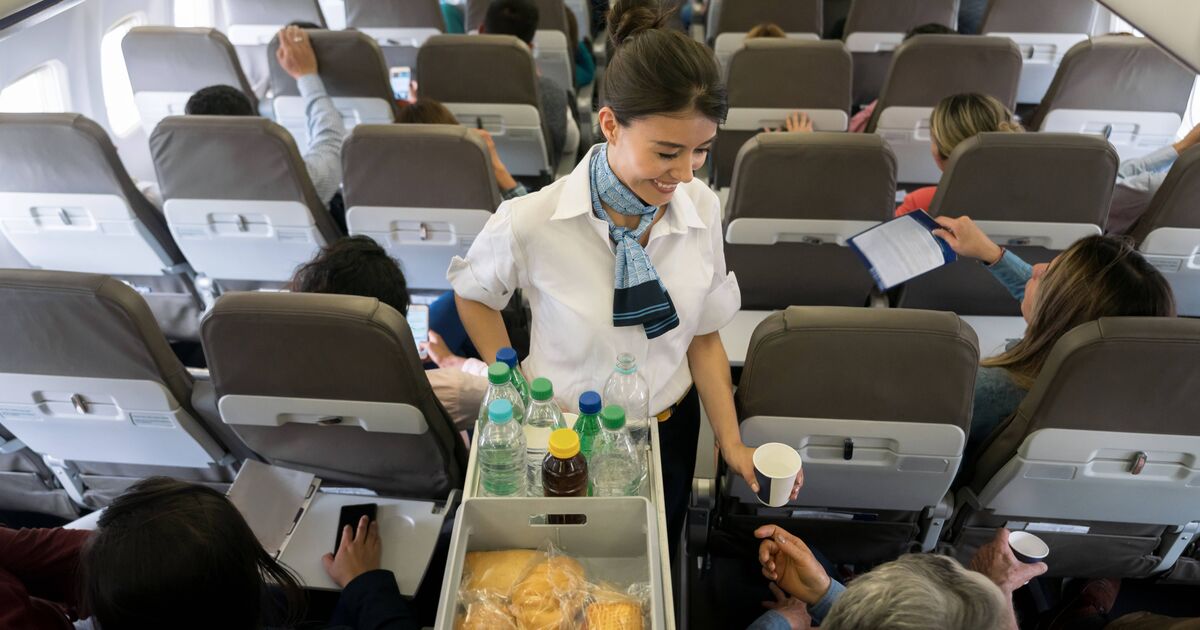Air travel remains the most common method for holidaymakers wanting to visit far away destinations, particularly during the summer months, with seasoned travellers familiar with aircraft cuisine options.
Plenty of airlines, including easyJet, TUI and Jet2, offer a selection of refreshments and drinks available to buy during flights, whilst lengthier international journeys typically feature complimentary in-flight meals. The sight of cabin crew coming down the aisle with a trolley containing trays of food excites some passengers but others prefer to bring their own meals.
Dr Rangan Chatterjee is regarded as one of the UK’s most significant medical doctors, gaining recognition through his TV programme Doctor in the House and his role as resident physician on BBC Breakfast. He has also written the chart-topping Sunday Times bestseller Make Change That Lasts.
The doctor recently shared a TikTok video containing footage from his Feel Better Live More podcast, where he explored the ‘scary truth’ about aircraft food alongside surgeon and wellness specialist Dr Darshan Shah. Dr Chatterjee recounted an encounter with a cabin service director during a flight who reportedly revealed he always brings his own meals aboard aircraft because “the stuff that needs to be added to plane food so that you find it tasty at altitudes, if you knew you wouldn’t touch anything on here.”
Dr Shah shared: “I noticed that if I eat the meal that they gave me in the flight, not only does my glucose shoot up but it would stay up for hours and I was like, ‘I’m going to fast on every plane trip now. It’s just not worth eating’.”
Aircraft meals often contain increased salt levels and extra seasoning to compensate for passengers’ diminished taste perception when travelling at altitude. Prima magazine highlighted that reduced cabin pressure and dry air conditions impair our nasal passages, which weakens our capacity to detect flavours.
The publication further disclosed that culinary experts and researchers have identified umami, recognised as the ‘fifth taste’, as particularly effective at boosting food flavours during flights. This savoury element is particularly prevalent in ingredients such as tomatoes, mushrooms, and spinach.
Conde Nast Traveller interviewed Ellie Birch, senior nutritionist at Holland and Barrett, about the food offerings on aircrafts. She explained to the magazine: “Food on planes also typically tends to be ultra-processed and low in nutritional value. The meals tend to be lower in fiber and higher in sugar, salt, and preservatives, which can cause digestive issues, too.”
During his TikTok video, Dr Chatterjee described his discussion with the cabin service director as “quite interesting.” He continued: “I already wasn’t eating plane food anyway, but that made me even more convinced.”
Dr Shah replied: “Oh that makes total sense because it just feels like the food has a tremendous amount of additives to it.” The TV doctor’s TikTok video has attracted 327,800 views, more than 9,300 likes and nearly 200 comments, at the time of writing.
One user agred: “He’s right, I used to work for an aviation food manufacturer and they have labs to ensure it tastes right because our tastebuds change at that altitude.” Another chimed in: “I’m always bloated on flights after a meal and I don’t normally get bloated.”
However, not everyone was that bothered about the food on planes as a third pointed out: “Depends on how often you fly. It makes perfect sense for a steward to avoid it.” A fourth commented: “Stuff they add to our everyday food, if we knew we wouldn’t eat anything.”

